And according to forecasts, the impact of El Nino is and will negatively affect many countries around the world, causing more storms, more floods and conversely also causing more severe droughts.
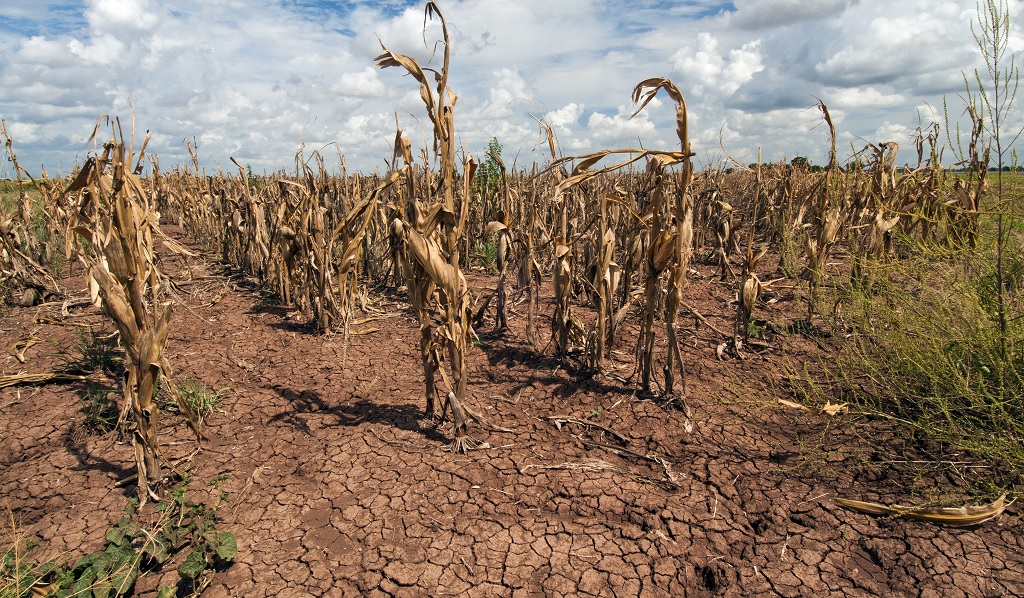
El Nino will make heat and drought worse. Photo: GI
The world begins to feel El Nino
Shortly after the US National Oceanic and Atmospheric Administration (NOAA) announced on Thursday (June 8) that the El Nino weather cycle had returned, a series of extreme weather events, as well as bad weather reports, appeared around the world.
Most recently, Cyclone Biparjoy is hitting the Indian Ocean coasts of India and Pakistan. The cyclone (also known as a tropical cyclone) is expected to cause “widespread damage,” including destruction of crops and infrastructure, forcing hundreds of thousands of people to flee to safer areas. According to Pakistan’s climate change minister, Sherry Rehman, this is “a cyclonic storm the likes of which Pakistan has never experienced.”
Along with climate change causing global warming, El Nino - a phenomenon that causes hot weather in most areas - is forecast to have an even more serious impact when it returns this time. El Nino will initially cause hot weather, more severe heat waves and especially drought in many areas.
One of the impacts is that it will make hydroelectric reservoirs more susceptible to drying up – a situation that has worsened in recent years. New research published by Nature Communications says satellite data shows that the amount of water locked up in 7,245 reservoirs around the world has decreased between 1999 and 2018.
What's more, a new report shows that temperatures around the world quickly crossed the threshold of severe heat earlier this June, a sign of the heat and the damage to come.
Specifically, researchers at the European Union's Copernicus Climate Change Service said on Thursday (June 15) that global surface air temperatures rose 1.5 degrees Celsius above pre-industrial levels for the first time in early June. That's the threshold governments said they would try to maintain under the 2015 Paris climate accord.
“We are likely to break global temperature records in the next few years,” said Rob Jackson, a climate scientist at Stanford University. “That’s the next El Nino. But it’s not just an El Nino. No one should be surprised when we set new global records. 1.5 degrees is coming very quickly; it may already be here.”
Forecast of drought and heat in Vietnam
Scientists in general around the world are of the same opinion that with El Nino having arrived and possibly lasting for several years, this is a major threat to human life, especially in vulnerable areas, including Vietnam and many other coastal countries in Southeast Asia.
According to the recently released update on El Nino status by the National Center for Hydro-Meteorological Forecasting (NCHMF), the El Nino phenomenon will continue to develop from June until the end of 2023 and maintain until 2024 with a probability of about 80-90%.
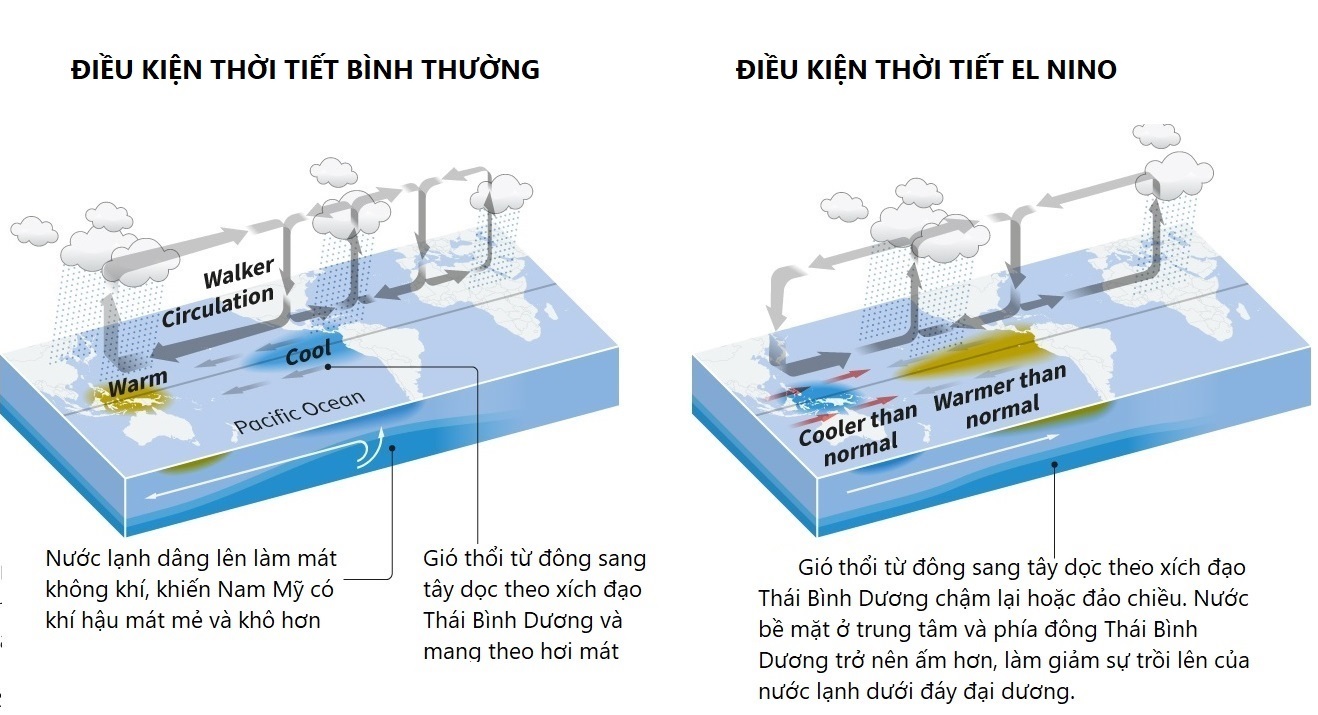
El Nino is a natural climate pattern caused by unusually warm waters in the eastern Pacific Ocean. It forms when winds blowing from east to west across the equatorial Pacific slow or reverse due to changes in air pressure. Graphic: Reuters/NOAA
According to the report, under El Nino conditions, in most regions of the country, average monthly temperatures tend to be higher than normal; heat waves may be more frequent and more intense; there is a possibility of many records for absolute highest temperatures.
NCHMF said that El Nino often causes rainfall deficits in most areas of the country, with a common level of 25 to 50%, most evident in the North Central region. Therefore, there is a risk of local or widespread drought in areas with high water demand for production and daily life.
"During the dry months of 2023, Vietnam needs to be on guard against low rainfall leading to drought, saltwater intrusion, and water shortages nationwide in the first months of 2024," the NCHMF said. Vietnam's meteorological agency cited the example of El Nino causing record droughts and saltwater intrusion in 2015/2016 and 2019/2020.
According to NCHMF, during El Nino years, the number of cold spells affecting our country is less than normal. That means, the average monthly temperature is higher than normal, the difference in winter is more obvious than in summer, and the southern regions are more affected than the northern regions.
In particular, under the influence of El Nino, especially strong El Nino episodes can cause many absolute maximum temperature records in many places.
Huy Hoang
Source


![[Photo] Ceremony to welcome General Secretary and President of China Xi Jinping on State visit to Vietnam](https://vstatic.vietnam.vn/vietnam/resource/IMAGE/2025/4/14/5318f8c5aa8540d28a5a65b0a1f70959)
![[Photo] Prime Minister Pham Minh Chinh chairs conference to review the implementation of Resolution No. 18-NQ/TW](https://vstatic.vietnam.vn/vietnam/resource/IMAGE/2025/4/14/dcdb99e706e9448fb3fe81fec9cde410)

![[Photo] National Assembly Chairman Tran Thanh Man meets with General Secretary and President of China Xi Jinping](https://vstatic.vietnam.vn/vietnam/resource/IMAGE/2025/4/14/4e8fab54da744230b54598eff0070485)

![[Photo] General Secretary To Lam holds talks with General Secretary and President of China Xi Jinping](https://vstatic.vietnam.vn/vietnam/resource/IMAGE/2025/4/14/b3d07714dc6b4831833b48e0385d75c1)
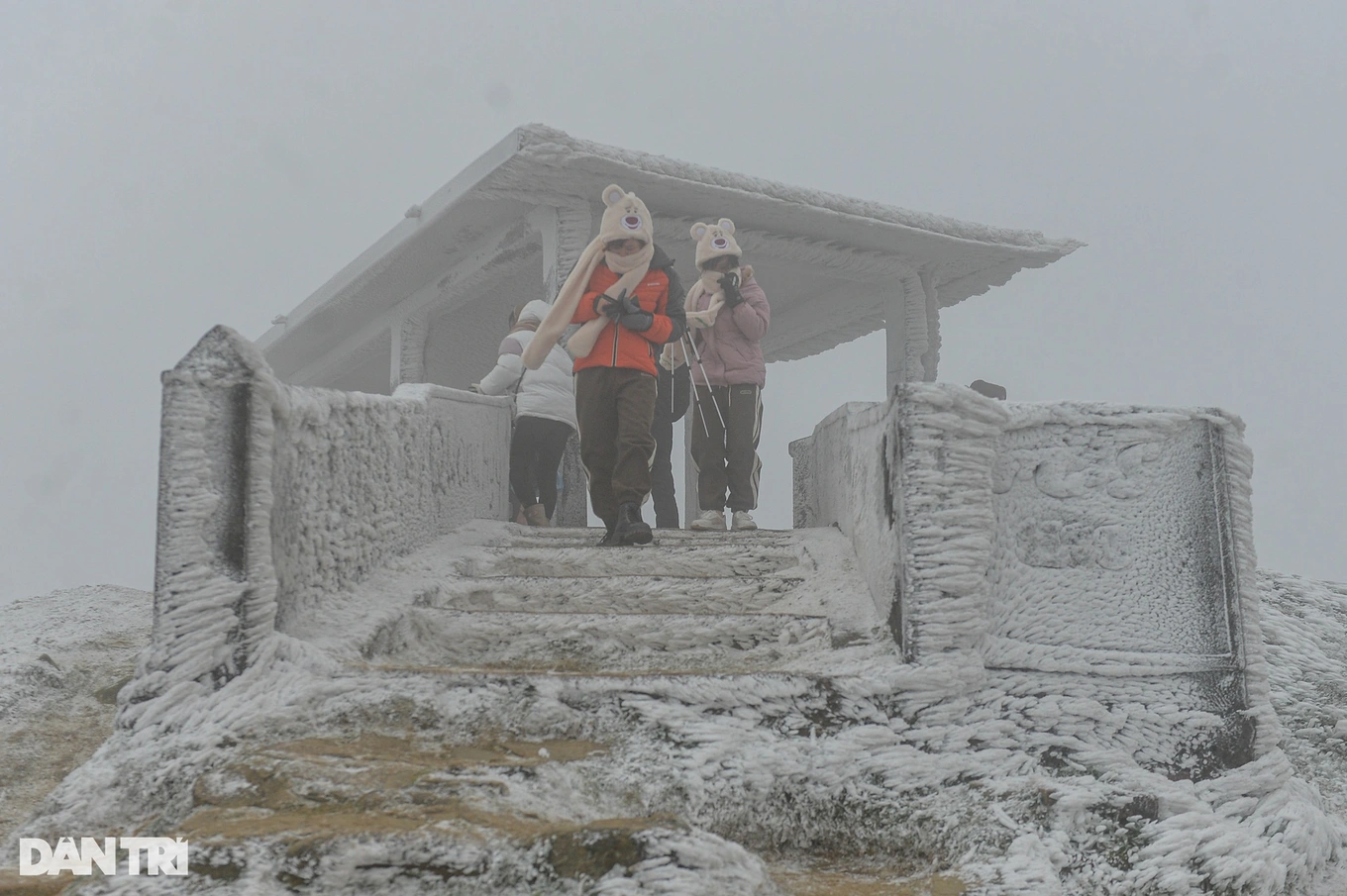






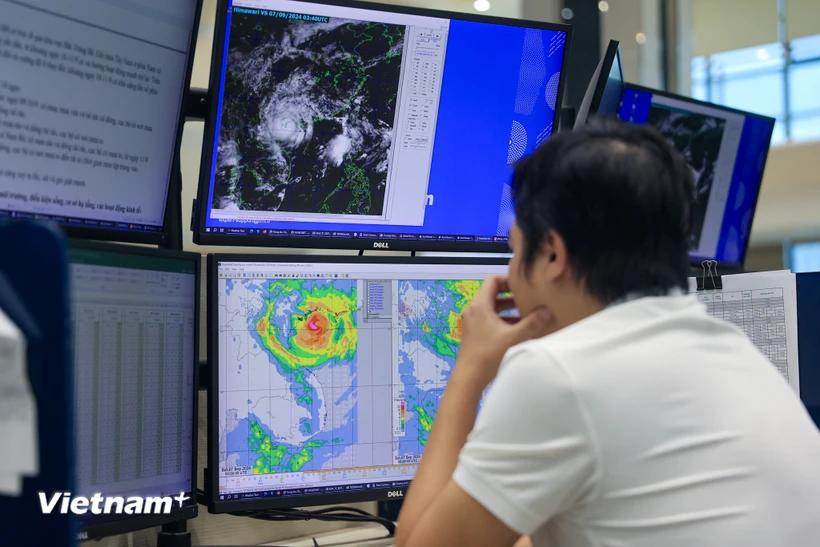
















![[Photo] Prime Minister Pham Minh Chinh meets with General Secretary and President of China Xi Jinping](https://vstatic.vietnam.vn/vietnam/resource/IMAGE/2025/4/14/893f1141468a49e29fb42607a670b174)















































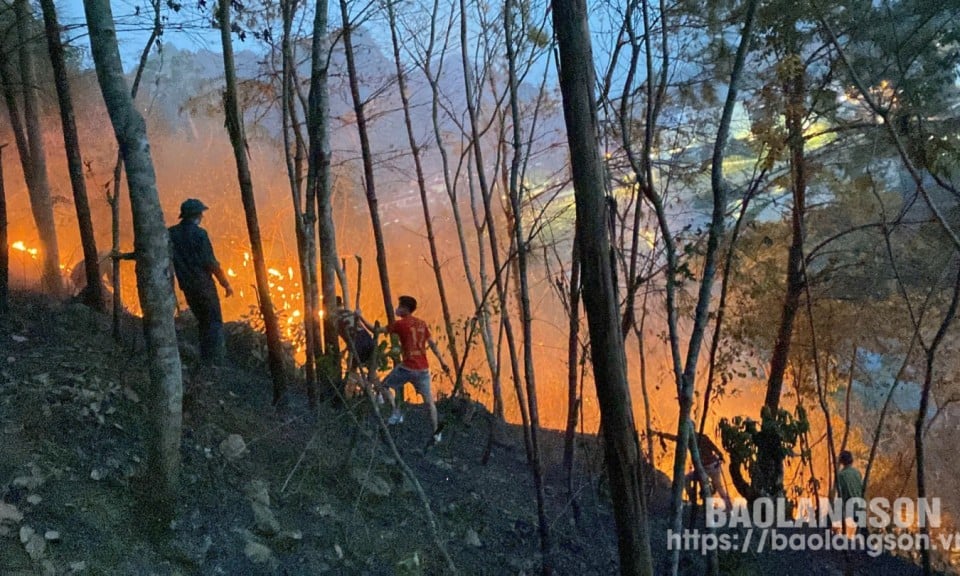
















Comment (0)